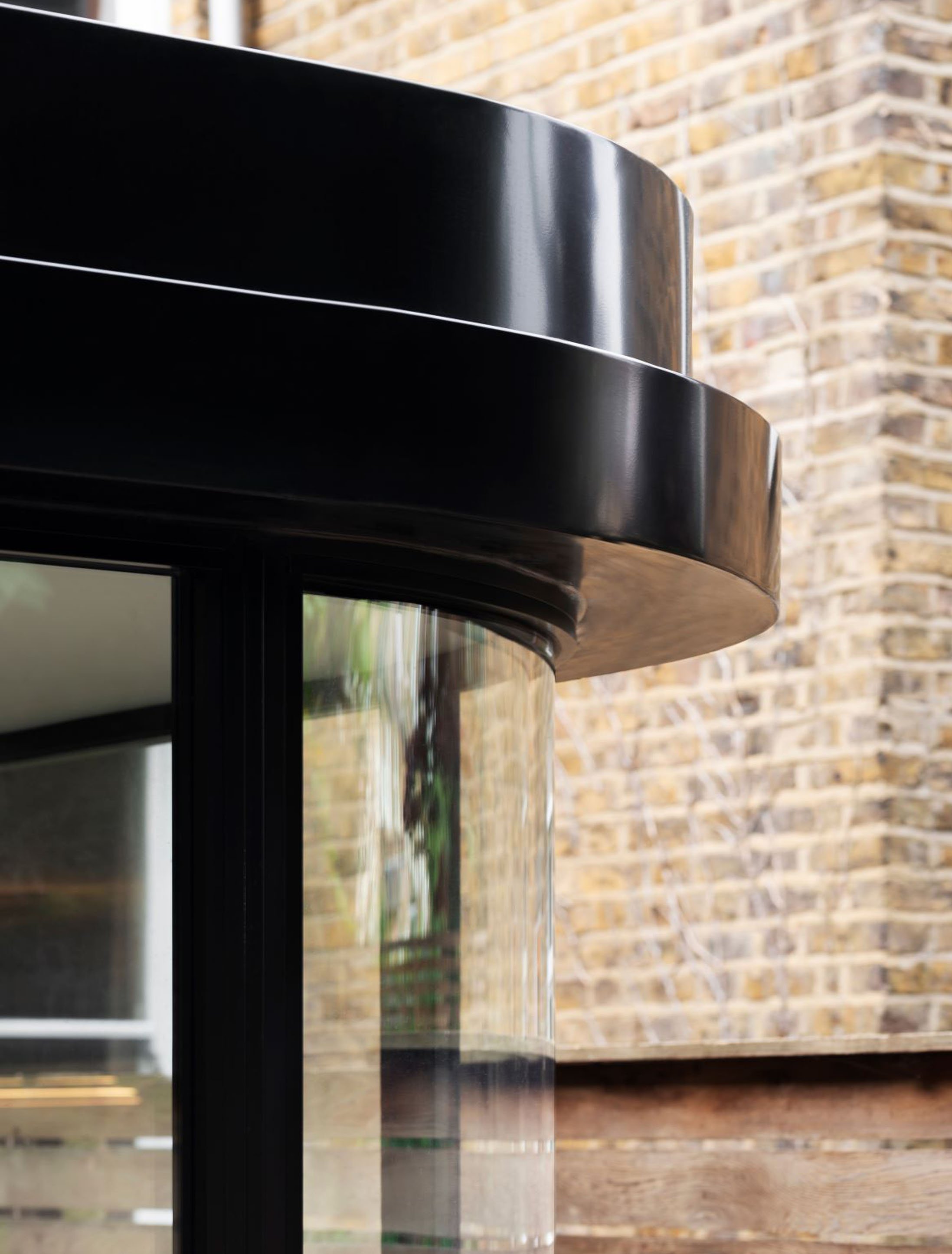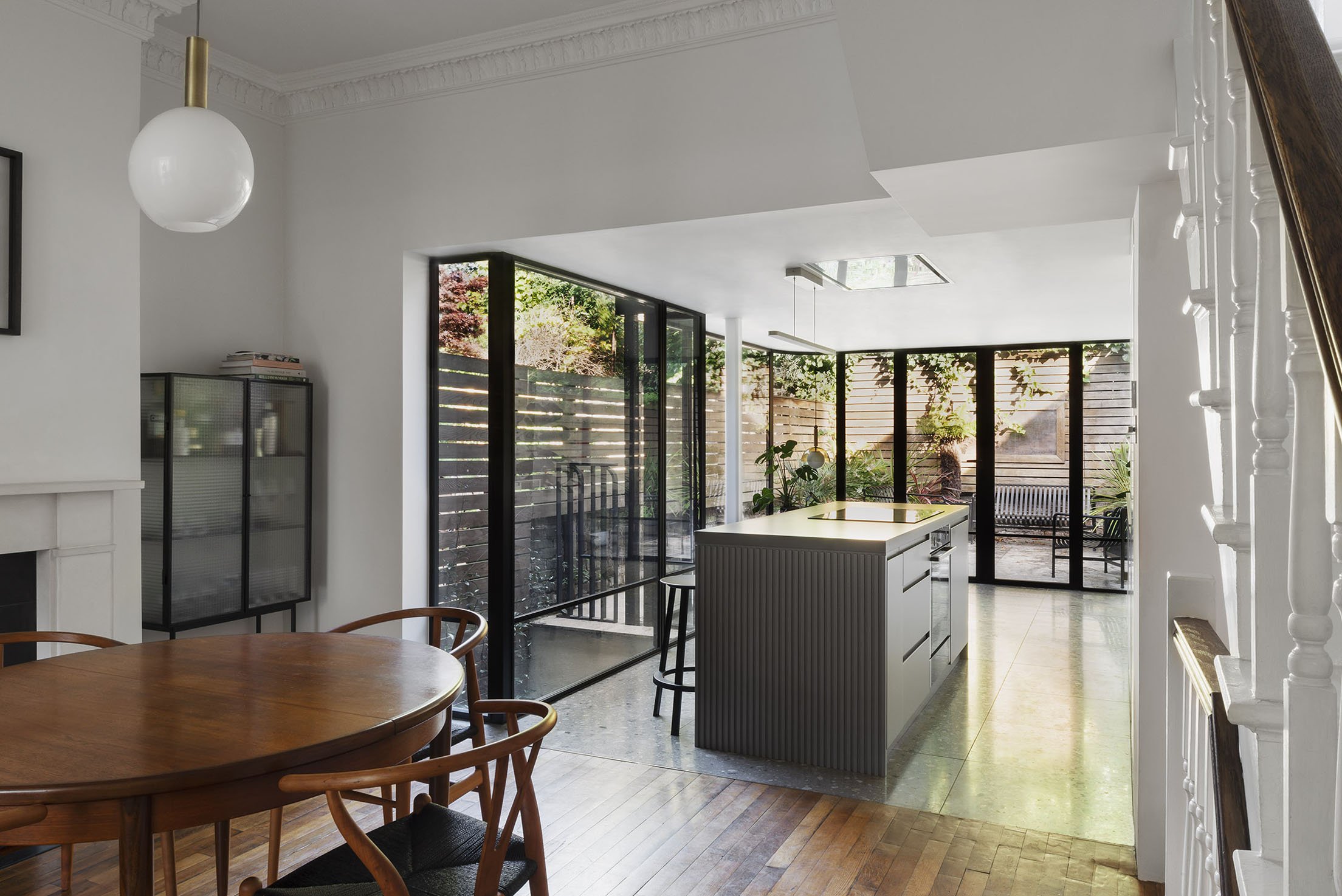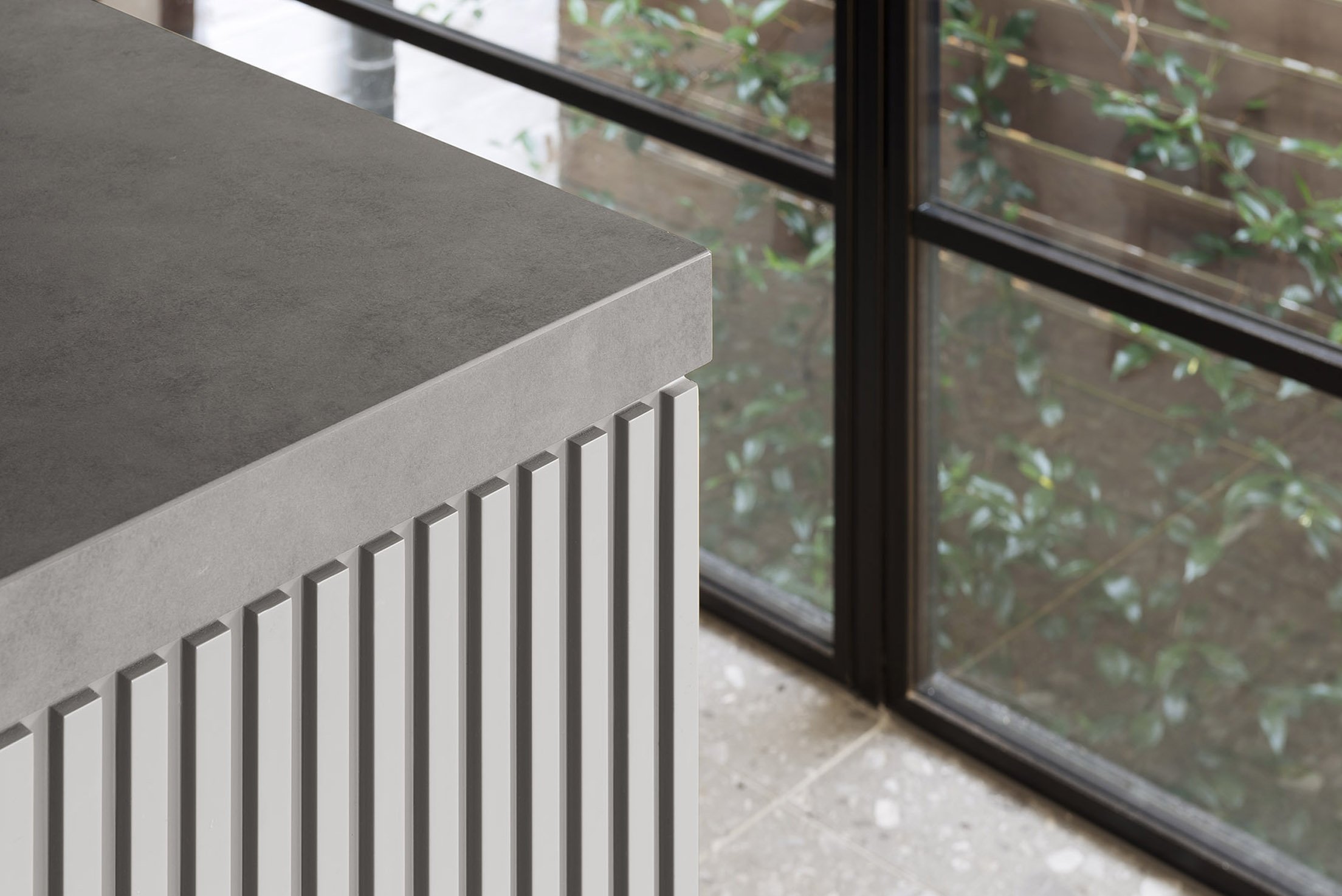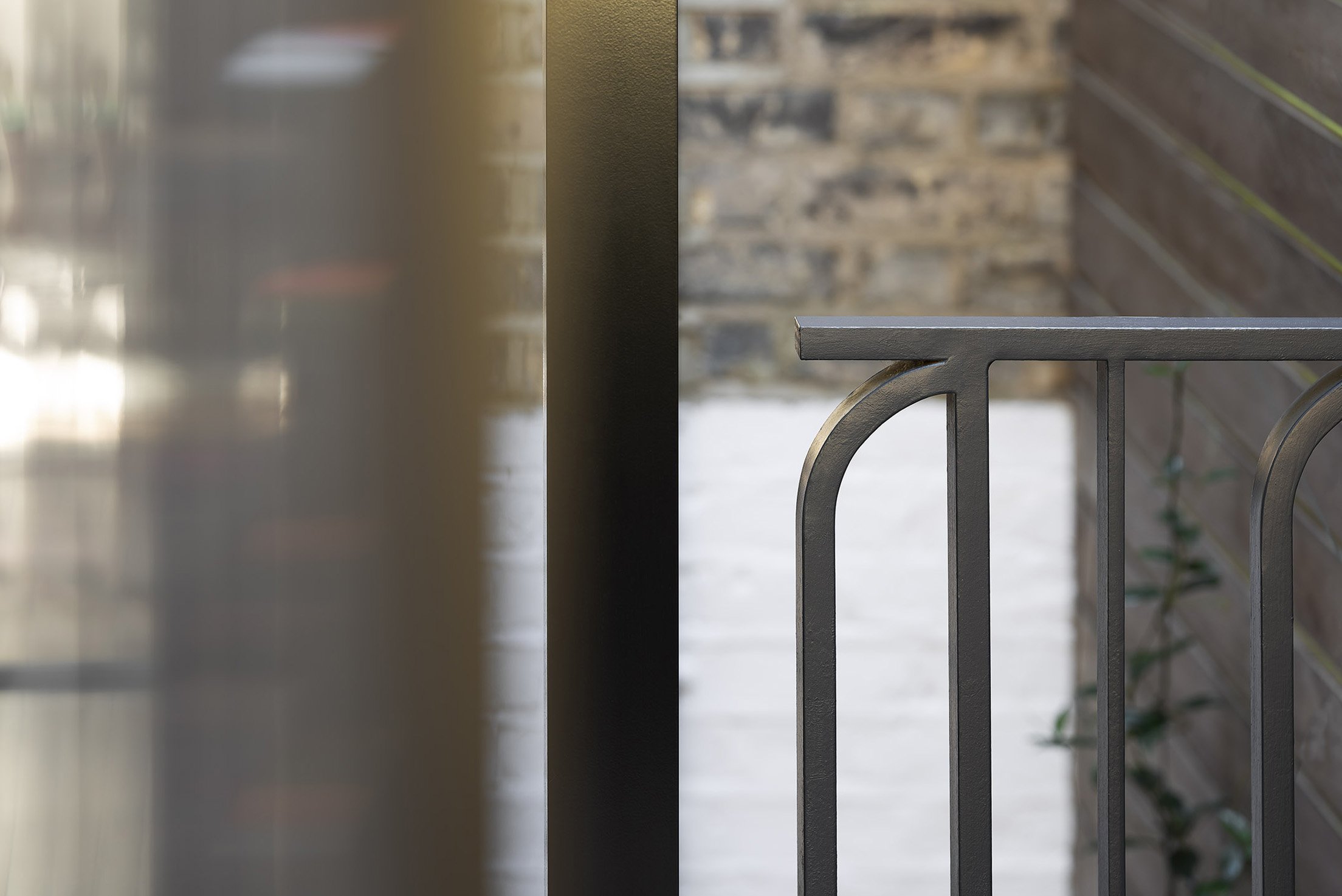
pavilion house
A new glazed pavilion extension to a Victorian terrace house in Stoke Newington, north London, creates a seamless transition from refurbished kitchen to re-landscaped garden. Its elegant form with narrow mullions is inspired by the curved shopfront windows of the Victorian era. The simplicity of the form belies a complex structural solution which creates the sense of a floating roof, allowing focus to remain on the glazing and views out to the garden. A monochrome interior palette, together with the dark frames of the glazing, creates a neutral backdrop for the owners’ furniture and homewares.
The single-storey, north-facing pavilion is sandwiched between a basement level and first-floor bathroom; the design had to respond to existing levels and ceiling heights and nestle carefully within. To open the space laterally, the pavilion roof is designed as a cantilever, with a single narrow column providing structural support. The complex structural balancing act is concealed in the roof soffit, which appears to float with ease above the pavilion’s glazed walls. The resulting structure is as lean as possible, celebrating the geometry of the curved glazing.
The design process began with research of the area, including the exploration of historical catalogues used to build Victorian shopfronts. A key characteristic of this period is filleted glass corners used to frame entrances and form bay windows, along with features like ornamental cornices and decorative window bars; these elements inspired the design.
The extension’s kinked footprint ensures that daylight passes through the rear basement lightwell to reach the guest suite at basement level. The push and pull of the glazed façade creates unique geometric moments, as well as preserving a narrow side garden between the kitchen and the party wall fence, which when fully planted will create a sense of being enveloped by the lush garden. A terrazzo floor runs from the extension to the garden, with a subtle change in texture to allow for outdoor slip resistance. This unifies the two areas, connecting house and garden.





Photography: Gilbert McCarragher
